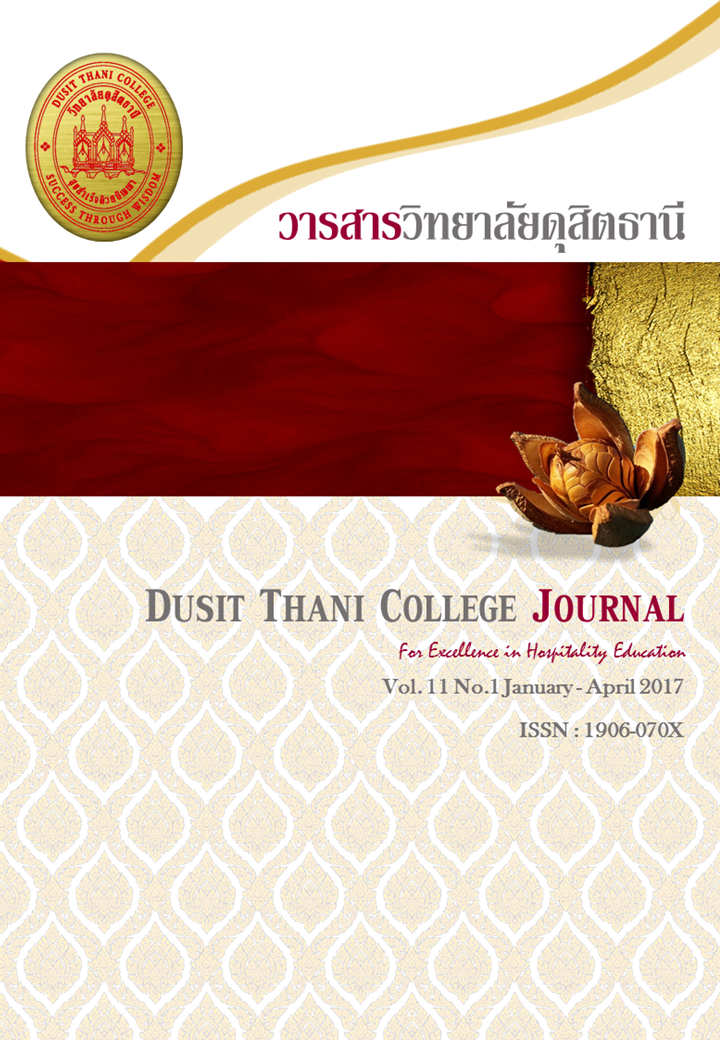Factors Affecting the Success of Small and Medium Sized Family Business Hotels in Pattaya
Main Article Content
Abstract
The objectives of this study were 1) to examine the 7S factors related to family business hotel businesses; 2) to study business operations of the small-and medium- sized family business hotels; and 3) to examine the relationship between management factors and the success of the hotels operated by family.
Research Methodology: For a quantitative study, the sample consisted of 200 participants. The surveys contributed to those who work in management level in small and medium sized hotels in Pattaya. Content validity of the developed test was verified by the item-objective congruency (IOC) index. Its reliability was measured by calculation of Cronbach’s alpha formula. The calculation of Cronbach’s alpha was 0.915. The data was analyzed by using percentage, frequency, mean and standard deviation. The hypotheses were tested by Correlation statistics.
Research findings were as follows: 1) Shared value was not the factor that would kept the business running but the strategy, staff, skills that would run the business. Most of the respondents thought that skill was one of the most important factors. A skill is the abilities of a hotel’s employees. It is included the capabilities and competences. The second importance is the strategy. It is a plan developed by a management team to achieve sustained competitive advantage and successfully compete in the market. The least important factor is structure. 2) Hotels had their origins in the cultures of ancient societies. As the number of travelers increased, personal courtesy gave away to commercial enterprise. 3) The hotel operators recognized their success factors although they may not be using the benefits of these factors that would brought to their organization strategic tools.
Article Details
Article Screening Policy
- All research and academic articles to be published must be considered and screened by three peer reviews in the relevant field / article.
- All articles, texts, illustrations and tables published in the journal are the personal opinions of the authors. Editors don't always have to agree. And no responsibility whatsoever is the sole responsibility of the author.
- The articles to be published must never be published. Where did you first publish? And not in the consideration of other journals If the audit found that there has been a duplicate publication It is the sole responsibility of the author.
- Any article that the reader sees as being plagiarized or impersonated without reference. Or mislead the work of the author Please let the journal editor know it will be your greatest blessing.
References
(F.a. Center, Ed.) Arip Public ompany Limited.
Abdullah, A. A., & Hamdan, H. M. (2012). Internal Success factor of Hotel Occupancy Rate. International Journal of Business and Social Sciences, 3 (22), 199.
Gee. C, Makens. J, Choy. D, (1984), The Travel Industry, 2nd ed.. Van Nostrand Reinhold,
New York.
La Porta, R., Lopez De Silanes, F., & Shleifer, A. (1999). Corporate ownership around the world. Finance, 471-517.
Lemon Grass Retreat, (2015). Hotel’s Work Position.
Lockyer, T. (2005). The Perceived Importance of Price as One Hotel Selection Dimension. Tourism Management, 26 (4), 529-537.
Netnapha Waithayalertsak (2006). Investors and Family Businesses before and after Economic crisis in 1997. Bangkok: Chulalongkorn University.
Peters, T. (2011, 01 09). A Brief History of the 7-S ("McKinsey 7-S") Model. Golden Bay, New Zealand.
Stock Exchange of Thailand. (2007). Fact Book. Statistics for Real Estate. Bangkok: Stock Exchange of Thailand.


